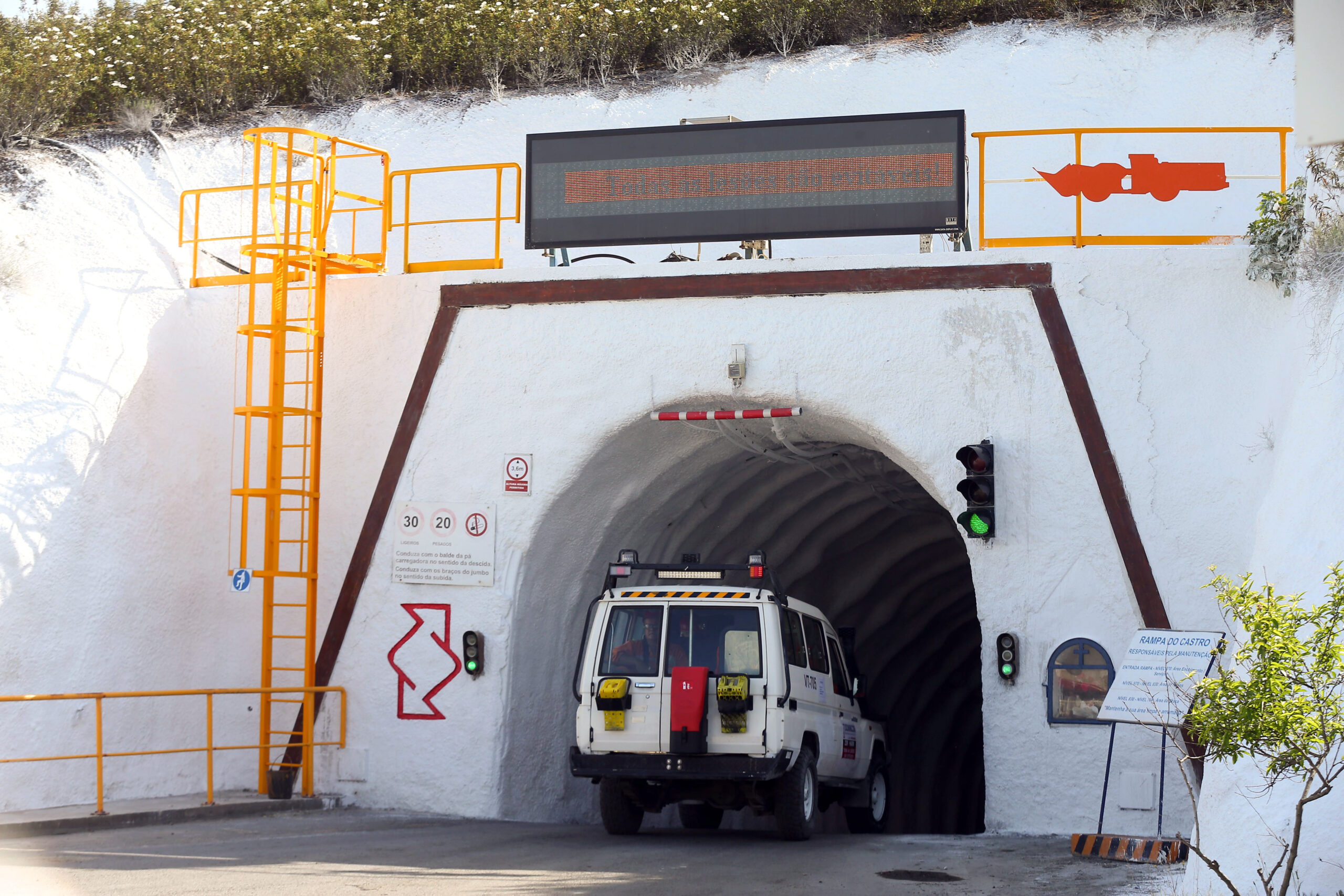
How can it be that a significant copper deposit, known for over 100 years, owned and operated by a progression of operators – including two leading international names – can struggle along for 93 years and then become an overnight success in 2005?
“It’s not for want of trying,” says Meiring Burger, mine manager at the Kansanshi Copper Mine in Solwezi, northern Zambia. “But the geology here is very difficult, with copper oxide at one end of the spectrum and copper sulphide at the other. In between there is a lot of mixed ore that mine operators simply didn’t know what to do with.”
At first neither did First Quantum Minerals – the eighth largest copper producer in the world and 80 percent majority owner of Kansanshi. First Quantum had been in Zambia since the mid 1990s, trying to make a living out of reclaiming lost copper from left over tailings ponds. It worked – to a degree - but in reality the operation was making more money from the acid produced as a bi-product of the reclamation process than from the copper itself due to depressed commodity prices. As a way of trying to improve matters, First Quantum started mining and exploration on a small scale until the opportunity came along to buy Kansanshi.
“Incredible as it seems,” says Burger, “in the first year of operation we produced more copper there than had been produced in the entire previous century. But even we were stockpiling masses of mixed ore, not really knowing what best to do with it.”
The open pit mine at Kansanshi consists of two very large pits in the ground that will eventually become one extremely large pit within a couple of years. The larger is 2km x 1km and currently 180m deep. The other is about half that size and goes down 100m. When the two meet up, the pit will be a massive 300m deep. The oxide ore is the weathered material close to the surface, while the fresh sulphide ore comes from below the weathering zone at various depths. Traditionally, copper mines want one or the other because both rely on entirely different processing routes to extract the copper. What the conventional plant doesn’t want – and what Kansanshi has in abundance – is a mixture of the two.
The success in making Kansanshi work was “exported” to Australia. In 2004 BHP Billiton started construction of a US$2.2 billion nickel mine but quickly closed the plant down in January 2009, after less than a year of operation. The mine was put up for sale later that year and bought by First Quantum for US$340 million.
“Our engineers,” says Burger, “spent 18 months making significant modifications to the processing plant. When the mine went back into production ahead of schedule, there was universal acclaim for the technical solutions First Quantum had developed.”
At Kansanshi, the conventional ways of processing oxide and sulphide ores are employed. The oxide is treated with acid to dissolve out the copper which is then won by electro-winning into 99.999 percent pure cathodes. Sulphide ore is crushed and milled before going through a flotation process which eventually creates a 26 percent Cu in concentrate that then needs smelting to attain the final copper product.
In addition to these two processing plants, Kansanshi now has a third hybrid line for the mixed ores. First Quantum has developed a ground breaking solution which uses a modified flotation cycle. Separate to this, some concentrate product is leached via a high pressure leach circuit, which then feeds this leach solution into the oxide circuit for eventual electro-winning. Experience gained on this HPL circuit stood First Quantum well in their Ravensthorpe operation.
In fact Kansanshi is in the middle of extensive expansion activity. “We have a $370m programme underway,” says Burger, “to lift production at the mine from the current 250,000 tonnes to 380,000 tonnes of copper by 2015. Not only will we be mining more ore but by building our own acid plant and smelter we will become just about as self sufficient as it is possible to be.”
Solwezi lies about 250 miles due south of the Katanga copper belt in the Democratic Republic of Congo and is at the end of a 160km spur road from the main north/south highway that serves Katanga’s mines. “The main road is tarred,” says Burger, “but we have to take care of the last 160km link ourselves. The roads are narrow and very busy, thereby restricting what we can transport that way. Not surprisingly, air transportation is vital for our business.”
So much so that First Quantum has cooperated with the government to upgrade the limited facilities at the Solwezi airfield to the point where it will soon become an international gateway. “The airstrip has been extended to 2.7km,” says Burger, “which means Boeing 737s can land now. The buildings are being improved and we are currently waiting on the government to install customs and immigration personnel before declaring Solwezi as the country’s newest international airport.”
With such a long road journey for anything and everything that needs to be trucked into the site, Kansanshi is on a mission to reduce costs wherever possible. “We are currently using 250,000 litres of fuel a day,” says Burger, “which all has to be brought in by tanker – a huge logistical challenge before mining even starts. We have a couple of major initiatives that will reduce our dependency on outside sources of fuel and should reduce our operating costs significantly.”
In a move designed to cut down on the number of truck movements needed per day, a new in-pit crushing plant is a key part of the expansion plans which will enable much of the ore to be moved by conveyors from pit to plant.
Where truck transportation is inevitable, a new electric trolley assist system is being installed. By fitting trucks with a couple of electric drive motors, integrated through gears with the conventional diesel engine, much of the work can be done by electric power, fed to the trucks by an overhead catenary. Going uphill, trucks can tap into the main grid and get a helping boost of power.
Another high cost area of the business, and onerous logistical consideration to boot, is the amount of sulphuric acid consumed. Either acid itself or the base ingredient sulphur is needed.
“Our plants use 1500 tonnes of acid a day,” says Burger, “which at a nominal cost of $300 per tonne is almost half a million dollars every day. It’s one of our biggest cost centres, accounting for about 11 percent of production costs. Today, as we are talking, a new 900 tonnes per day acid plant is being commissioned which will help minimise overall production costs until the final link in the chain – a new 1.2 million tonne concentrate smelter is complete.”
Considering the amount of copper produced in the region, Zambia currently doesn’t have enough smelting capacity to cope. First Quantum is investing $500 million in its own smelter at Kansanshi capable of processing 1.2 million tonnes of concentrate from which 300,000 tonnes of copper will be extracted (compared with the eventual mine capacity of 380,000 tonnes). Civil work for the project has started and the smelter should be in production by the end of 2014, coinciding with the increased production targets being met.
Currently, First Quantum sends its copper concentrates to be processed at various Zambian smelters on the Copperbelt owned by other companies – adding to road congestion as well as cost. “When our expansion plans are complete,” says Burger, “there will still be a shortfall of smelter capacity but the figure will be very small compared to what we are doing today.”
Apart from refining the copper, the smelter will produce more than 3,000 tonnes a day of sulphuric acid at almost zero cost, minimising the production costs of high acid-consuming oxide ores as well as the leaching process used on mixed ores.
As with all African mining companies, finding experienced workers is also a challenge, but Solwezi is actually quite a sizable community. When First Quantum first went there the population hovered around 100,000. Today it has swelled to above 400,000. “We have around 9,000 people on site,” says Burger, “4000 on our payroll and the rest hired by construction and other contractors. Accommodation for them is not so much of a problem but it has meant that Solwezi has grown into a bit of a shanty town with very little in the way of organised town planning. We do a lot to improve matters – at the moment we are building 1000 additional houses - and are willing to do even more to make conditions better for all concerned but it’s a sensitive area with the local council wanting to stay in control.”
It shouldn’t be a question of money. Kansanshi is said to be Zambia’s biggest source of revenue. Apart from the 20 percent of Kansanshi that is owned by the parastatal ZCCM IH, First Quantum contributed US$611 million last year in various taxes – double the previous year.
“But there are no existing mining skills amongst the local population,” says Burger, “and we have an obligation to try and give employment to those who actually come from this region. It’s a challenge. Many have never even ridden a bicycle – let alone a car – and now they are in control of mining equipment worth many millions of dollars. As you can imagine, there is a lot of training needed and a considerable amount of supervision.”
The weather can also contribute problems. During the rainy summer season from November to April, it rains 10 to 50mm almost on a daily basis. Not surprisingly, a lot of this ends up at the bottom of the pit and at their height, drainage pumps are shifting 75,000 m3 of water a day. On the other hand, the rain is short lived and predictable, which has enabled the mine to plan accordingly to minimise disruption.
But Kansanshi is not the only African interest owned by First Quantum. Part of all its Solwezi expansion plans is the development of three new potential mines that collectively go under the working name of Trident. The one nickel and two copper prospects lie about 120km from Kansanshi and will cost in the region of $1billion to develop. Once in opencast production, Trident is expected to eventually contribute 300,000 tonnes of copper per annum.
First Quantum should be a big player over the border in the Democratic Republic of Congo, too but a dispute with the government there has shut down all activity. The mining company had invested $1 billion developing the Kolwezi copper-cobalt project, only to see it seized by the authorities. A second interest at the Frontier mine – reputed to be the Congo’s biggest tax contributor and providing employment for 1,500 nationals, was also seized by armed police and soldiers in 2010, seemingly in retaliation for contesting the Kolwezi action in international arbitration. Ultimately the matter was settled out of court with ENRC compensating First Quantum for their seized assets.
In the meantime, First Quantum is working hard on meeting its objective of becoming ‘a globally diversified mining and metals company.’ In the absence of activity in the Congo, it has a portfolio of four operating mines in Zambia, Australia, Finland and Mauritania, producing LME grade "A" copper cathode, copper in concentrate, nickel concentrate, gold and sulphuric acid. In various stages of development are another three projects: two in Zambia and one in Haquira in Peru.
Written by Alan Swaby, research by Paul Bradley



 Kansanshi-Africa.Mining-Feb13-Bro-s.pdf
Kansanshi-Africa.Mining-Feb13-Bro-s.pdf









